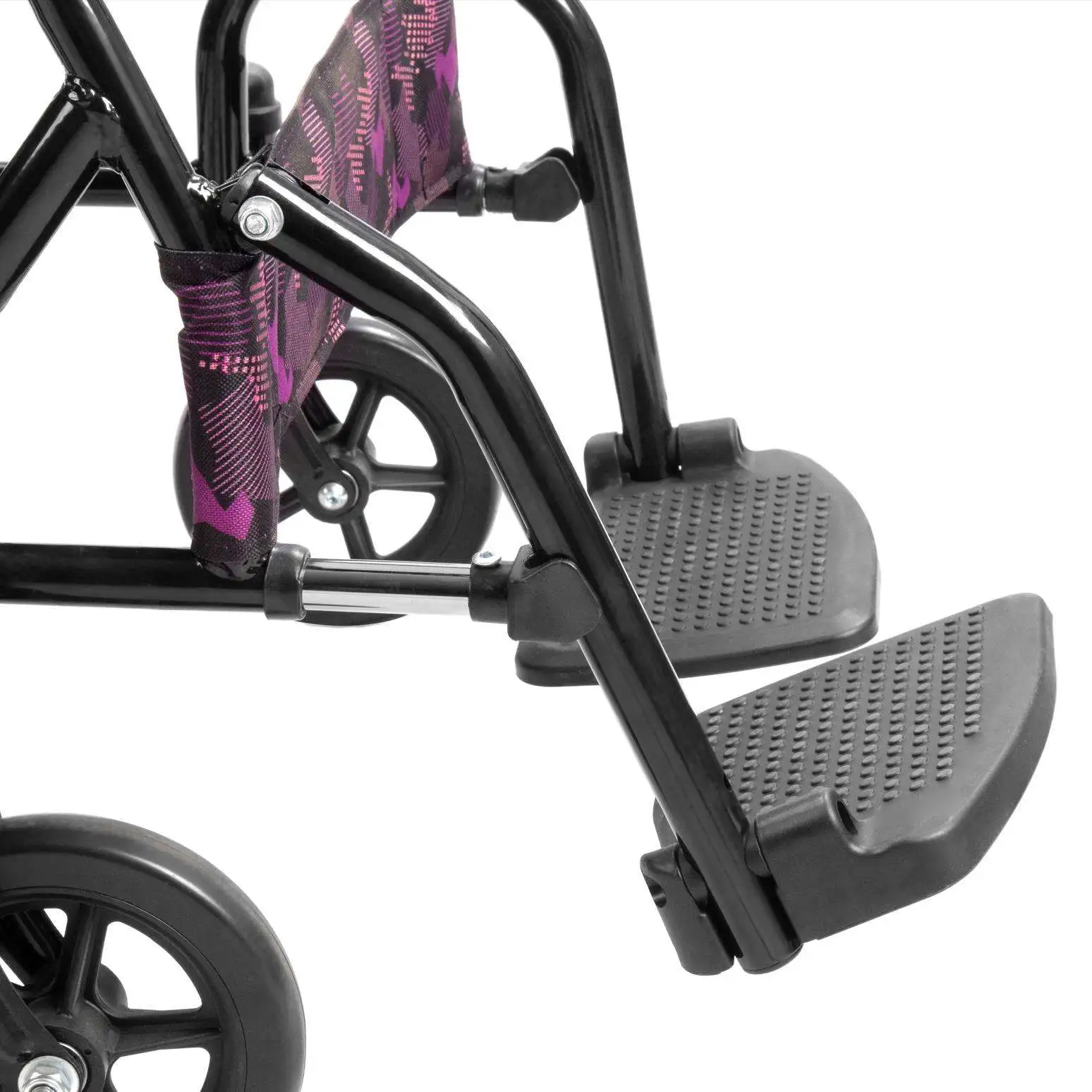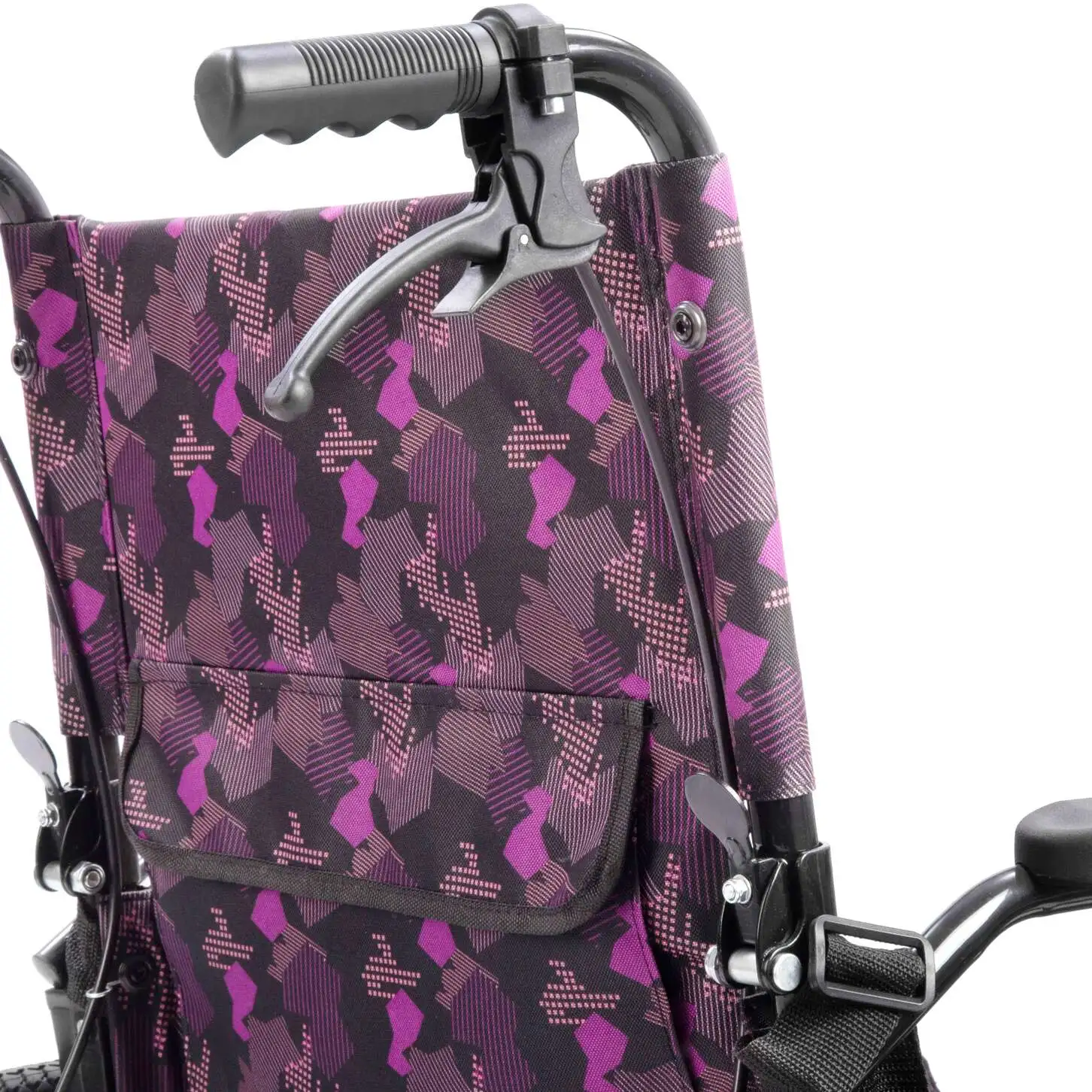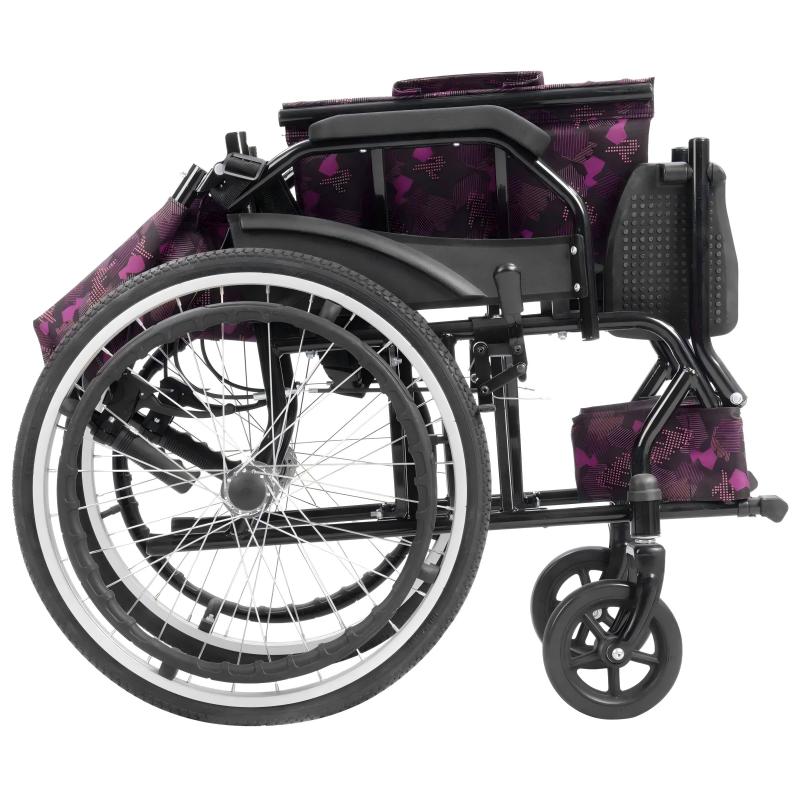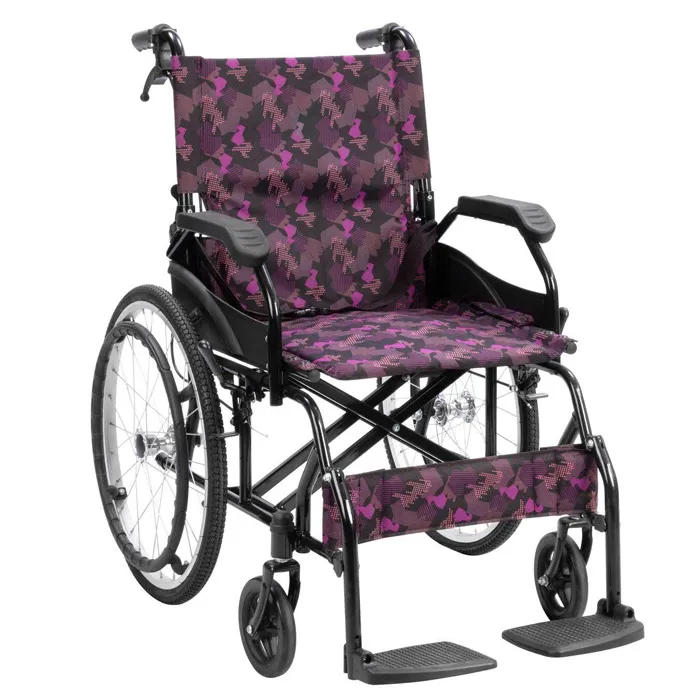Manual wheelchairs are increasingly used in the fields of medical care, family and public services. Among them, manual folding wheelchairs are widely welcomed because of their lightness, easy storage and portability. However, there are many cognitive misunderstandings around the question of "Can all manual wheelchairs be folded?"
This article will professionally and systematically explore this topic from multiple dimensions such as structure, design principle, application scenario, and classification differences, and comprehensively answer the core question of "Can all manual wheel chairs be folded?"

The difference between manual wheelchairs and manual folding wheelchairs
Before answering the question of "Can all manual wheel chairs be folded?", it is necessary to first clarify two key concepts, namely "manual wheel chair" and "manual folding wheelchair".
1. What is a manual wheelchair?
A manual wheel chair refers to a non-electrically driven wheelchair that is driven by the user pushing the wheel rim by hand or by others manually. This type of wheelchair relies on manpower to complete operations such as moving forward, turning and stopping. It is mainly used for people with limited lower limb function, unstable walking, rehabilitation stage or mobility impairment.
2. What is a manual folding wheelchair?
A manual folding wheelchair is a type of manual wheel chair. It has a foldable frame structure design. Users or caregivers can fold the wheelchair in a specific way for easy transportation, storage or temporary storage. Its folding methods are mainly divided into:
• Horizontal folding: the middle part of the frame is folded inward, which is the most common structural form;
• Foldable back: the backrest can be folded forward;
• Foldable footrest: the footrest can be folded inward or disassembled.
Manual folding wheelchairs are widely used in many scenarios such as clinical, home, and travel due to their flexibility and portability.

Can all manual wheelchairs be folded?
To determine whether all manual wheel chairs are foldable, the structure and category of manual wheelchairs must be systematically classified. Different types of manual wheelchairs, their structural characteristics, usage scenarios, and manufacturing intentions determine whether they have folding functions.
1. Standard manual wheel chair: Most are foldable
The standard manual wheel chair is the most common style on the market, usually equipped with 24-inch rear wheels, push rings and simple footrests. Most of these manual wheelchairs use an X-shaped beam structure to achieve horizontal folding. They are small in size when stored and can be easily placed in the trunk of a car. They are typical representatives of manual folding wheelchairs.
• Foldable: Most are foldable, and some high-strength models are not foldable.
2. Lightweight manual wheelchair: Most are foldable and easy to carry
Lightweight manual wheel chairs emphasize "portability" and "weight reduction". They are mostly made of aluminum alloy and have a compact frame design. They are commonly used in aviation, travel and other scenarios. In order to meet the carrying needs, these manual wheelchairs almost all have a folding function and are smaller in size after folding.
• Foldable: Almost all are manual folding wheelchairs.
3. Nursing manual wheelchair: Determined by the design structure
The nursing manual wheel chair emphasizes the convenience and comfort of care, and is suitable for users with severely limited mobility who need to be pushed by others. In order to enhance stability or integrate functions such as potties and dining tables, this type of wheelchair sometimes sacrifices some folding ability in structure.
• Foldable: Some are foldable, while others are one-piece structures that cannot be folded.
4. Sports manual wheelchair: Most are not foldable
Sports manual wheel chairs are designed for competition and high mobility, such as wheelchair basketball and wheelchair tennis. This type of wheelchair usually has a welded frame that emphasizes lightness and high strength, and does not have a folding mechanism.
• Foldable: Most are not foldable.
5. Children's manual wheelchair: Various functions, foldable or not
Children's manual wheel chairs involve growth adjustment, safety design, color matching and other factors. Some models are designed as portable folding structures, while others use fixed structures for stability.
• Foldable: Depends on the specific model.

Technical structure and principle of manual folding wheelchairs
Understanding the internal structure of manual folding wheelchairs helps explain why not all manual wheelchairs can be folded.
1. The core of the folding structure: X-shaped cross support rods
Most manual folding wheelchairs use metal brackets with an X-shaped cross structure. The main principles are as follows:
• Two cross metal rods are hinged at the bottom of the wheelchair;
• When folding, the user lifts up the seat cushion and the X-shaped bracket shrinks;
• When unfolding, press down on the seat surface and the cross bracket unfolds to the locked position.
2. Analysis of the position of folding components
Manual folding wheelchairs usually have the following foldable components:
• Seat and frame: folded horizontally;
• Backrest: fold forward or flip back;
• Armrests: some models can be flipped or removed;
• Footrests: most can be folded or rotated to remove.
Different folding methods affect the final storage volume and ease of use of the wheelchair, but also affect the overall rigidity and support strength of the wheelchair.
Why are not all manual wheel chairs designed to be foldable?
Although manual folding wheelchairs have significant advantages in terms of ease of use, designers do not always prioritize foldability. There are many technical and practical considerations behind this:
1. Structural strength requirements
In some high-strength, professional applications, such as competitive wheelchairs or heavy-duty nursing wheelchairs, manufacturers pay more attention to overall rigidity and anti-deformation ability. One-piece welded frames are more stable than folding frames, so the folding function is often abandoned in the design.
2. Stability priority principle
For patients with severe mobility impairments and people with poor posture control, the stability of the wheelchair is more important than portability. Using a non-foldable one-piece frame helps improve safety and avoid problems such as loose structure and component displacement.
3. Functional integration limitations
Some manual wheelchairs have built-in complex functions, such as adjustable angle backrests, liftable seats, universal medical accessory interfaces, etc. These functions may limit the feasibility of folding designs.

"Are all manual wheelchairs foldable?" - Professional answer
The answer is no! Although most of the manual wheel chairs used daily on the market, especially the standard and lightweight ones, have folding functions and are classified as "manual folding wheelchairs", there are still many manual wheel chairs that do not have folding designs due to structural stability, functional complexity, and specific usage scenarios.
For the convenience of professionals and consumers, it can be summarized as follows:
| Manual wheelchair types | Is it generally foldable? | Is it classified as a manual folding wheelchair? |
| Standard manual wheelchair | Yes | Yes |
| Lightweight manual wheelchair | Yes | Yes |
| Care manual wheelchair | Partially foldable | Partially |
| Sports manual wheelchair | No | No |
| Children's manual wheelchair | Depends on the model | Partially |
Can I Visit Your Factory in Foshan, China?
Yes, we warmly welcome visitors! Come and see our production facilities, meet our team, and discuss business opportunities face-to-face. Yikang Medical is conveniently located in Foshan, a major industrial city in Guangdong Province. Schedule your visit and explore how we can become your long-term supplier of medical and rehabilitation equipment.

